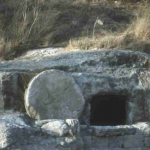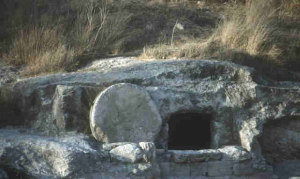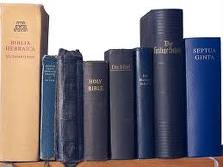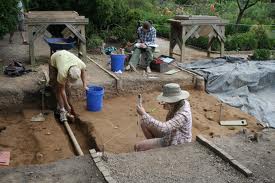Christian Apologetics ,
The Bible
How Do We Know That The Bible We Have Today Is Reliable?
 The best way to consider the acceptance of the documents are to think of them in terms of evidence. Simon Greenleaf was a professor of Law at Harvard University in the nineteenth century, and established himself as a premier authority on the rules of evidence. His three volume work on the rules of evidence is still a standard used by lawyers today. He wrote a treatise on the admissibility of the four Gospels, and concluded that the "competence of the New Testament documents would be established in any court of law." In short, according to one of the most prestigious experts on the admissibility of documents in a court of law, the Bible is able to withstand the scrutiny and be accepted as reliable evidence.
The best way to consider the acceptance of the documents are to think of them in terms of evidence. Simon Greenleaf was a professor of Law at Harvard University in the nineteenth century, and established himself as a premier authority on the rules of evidence. His three volume work on the rules of evidence is still a standard used by lawyers today. He wrote a treatise on the admissibility of the four Gospels, and concluded that the "competence of the New Testament documents would be established in any court of law." In short, according to one of the most prestigious experts on the admissibility of documents in a court of law, the Bible is able to withstand the scrutiny and be accepted as reliable evidence.
Utilizing these rules of evidence, Ewen makes the case that the New Testament documents pass the following tests: Admissibility and Authenticity of the Evidence (the manuscripts) as determined by their age, quality and quantity, care in their preservation, and location, timing and motive of their writers. Corroborating Evidence is then analyzed, including archaeological evidences, results of scientific papyrology studies, and comparison of other similarly dated historical documents. Finally, upon passing these tests, the documents are then subjected to 'Cross Examination', assuring that the documents are not internally or externally contradictory, that the writers have established credibility, (that the message is proven by extra-biblical sources)
In summary, this investigation results in a conclusion beyond a reasonable doubt, that 1) Jesus lived approximately 2000 years ago; 2) Jesus died on the cross; and 3) Jesus rose from the dead. (Adapted from Faith On Trial, Pamela Binnings Ewen.)
How do we know that they were copied correctly through the ages?
Two ways. First, in antiquity, the role of a scribe was very prestigious. The role of a scribe is that of a "professional copier." But it goes far beyond what we consider 'copying' today. Many procedural details were followed to assure reliability in the copying of these Manuscripts. Each scribe had a personal identification sign, in which his reputation as a scribe was built. A second set of eyes served as 'correctors.' Severe penalties were imposed for carelessness. Even the numbers of letters were counted, to assure that the copy was as close to the original as could be. We can be assured that the method of transmission through the ages by scribes was reliable.
Second, recently discovered manuscripts from antiquity are nearly identical to the copies we have today. Until the 'Dead Sea Scrolls' were discovered in the caves of Qumran in 1946, the oldest known manuscript of the entire Bible was dated about A.D 900 (the Aleppo Codex.) "The books of the Old Testament found in the Dead Sea Scrolls written approximately one thousand years before the Aleppo Codex were found to be almost identical to those of the Aleppo Codex." (Pamela Binnings Ewen, Faith On Trial, pg 33.) Discrepancies of syntax were all that was found (for example – color vs. colour.) This is breathtaking evidence that the transmission of the Holy Writings have been immaculately preserved over millennia.
In addition, many first person accounts, claims of eyewitnesses, combined with the likelihood of the early dating of the Gospels, provide the suggestion that eyewitnesses could have read the Gospels, and therefore been available to dispute them if there were errors. No record of these disputes exist. In addition, these people could have brought dishonor and pressure upon the believers, who would likely not have adopted beliefs that they knew were false.
Finally, there is sufficient 'political' reason to trust the transmission of the stories. Knowing that Caligula became Emperor of Rome in 37 A.D., and that he demanded sole worship of himself, even of the Jews, it would be life-threatening to promote the worship of someone else. This gives credence to the consideration that the early Church would not have promoted a doctrine that they knew to be wrong (seeing a resurrected body would certainly embolden a person's beliefs!) All of the Gospel writers suffered greatly, as did Paul. Most were killed for their beliefs.
What is the Status Of The Documentation?
The original manuscripts (the autographa) are lost, but there are enough copied manuscripts in existence, some written during the lifetimes of some eye-witnesses to the Resurrection and the ministry of the Apostles, that the credibility of the transmission is assured. This simple fact is astounding when compared to the evidence of other copied manuscripts from antiquity (indeed, there are NO originals of ANY manuscripts from antiquity!) For example, there are only 643 manuscripts of the Iliad in existence, which is similar in length to the New Testament. There are over 25,000 pieces of evidence for the Bible, and they are all so similar that they are considered to be identical.
Can We Trust These Documents If They Weren't Written In 'Real Time'?
Some believe that this gap of ~50 – 100 years before things were written down automatically destroys their reliability. They assert that legends may have developed in lieu of fact, and therefore we have no basis in trusting that the manuscripts are valid. There are essentially three items to consider when contemplating this issue:
1) The transmission of fact and tradition when eyewitnesses are still alive. Personal interpretation and adjustment is easy to do if the writer or eyewitnesses are not around, but much more difficult if you are possibly subject to correction or ridicule from them. With the Gospels as close as 50 years after the death of Christ, it is conceivable that many of these eyewitnesses were still alive, as well as Peter and Mark and Paul and many of the first generation church leaders (such as Polycarp and Papias, who were direct disciples of the Apostle John.)
In addition, evidence of the the introduction of the common 'heresies' (distortion of original doctrine/orthodoxy) did not begin until ~200 A.D., with the Gnostic heresy and others. (Indeed, this is one reason the Church fathers formalized the canon.)
2) The incredible similarity of the disparate documents. When we consider the emphasis on perfection that the scribes – think of them as 'human copying machines' – had (remember that their livelihood and reputation relied on their quality of work – not to mention the seriousness they took to transmitting what they believed to be the 'word of God'), we can place faith in their work. We know that this quality exists when we find documents, such as the Dead Sea Scrolls, that were written approx. 1000 years later than some earlier documents, and found to be practically identical.
In addition, when the various manuscripts are compiled with their various insignificant 'disparities' (akin to spelling color as 'colour' – and 'error' that does not changing the meaning) we can compile the original. Consider this exercise: If I write a letter to a friend, and then give it to 10 different people to copy, they each may make an error here or there, but they all won't make the SAME error. Because of this, someone could easily determine what the original letter said from these ten copies. For example, 9 of them may spell my name right (Sutherland,) while one may spell it wrong (Southerland). It would be a proper assumption for my friend, when he sees the 9 vs. the 1, that my original had the spelling sans 'o'.
3) The relatively short period of time when compared to other 'trusted' pieces of antiquity. The Old Testament books are generally considered reliable especially because of the previous examples. New Testament documents are also, but an additional comparison of known and trusted pieces of antiquity aid in conveying trust (we should not hold these Biblical documents to any further doubt than we do other accepted manuscripts – this would be a double standard of the rules of evidence in antiquity!) Consider the following comparisons of documents and their timing:
Biblical Works of Antiquity
|
Work
|
Author/Lifespan
|
Written
|
Period Between Event and Writing
|
Earliest Extant Manuscript
|
Period Between Event and Manuscript
|
|
Gospel of Matthew
|
Matthew / ~0-70? A.D.
|
~50-70 A.D.
|
< 50 years
|
ca. 200
|
< 150 years
|
|
Gospel of Mark
|
Mark / ~15-90? A.D.
|
~65-70 A.D.
|
< 50 years
|
ca. 225
|
< 200 years
|
|
Gospel of Luke
|
Luke / ~10-80? A.D.
|
~60-75 A.D.
|
< 50 years
|
ca. 200
|
< 200 years
|
|
Gospel of John
|
John / ~10-100? A.D.
|
~90-110 A.D.
|
< 80 years
|
ca. 130
|
< 100 years
|
|
Pauline Epistles
|
Paul / ~0-65? A.D.
|
~50-65 A.D.
|
~20-30 years
|
ca. 200
|
< 200 years
|
Secular Works of Antiquity
|
Work
|
Author/Lifespan
|
Written
|
Period Between Event and Writing
|
Earliest Extant Manuscript
|
Period Between Event and Manuscript
|
|
War of the Jews
|
Josephus / ~37-100? A.D.
|
~80 A.D.
|
~10-300 years
|
ca. 950
|
~900-1200 years
|
|
Antiquities
|
Josephus / ~37-100? A.D.
|
~95 A.D.
|
~30-300 years
|
ca. 1050
|
~1000-1300 years
|
|
Annals
|
Tacitus / ~56-120? A.D.
|
~100-120 A.D.
|
~30-100 years
|
ca. 850
|
~800-850 years
|
|
History
|
Herodotus / ~485-425? B.C.
|
~430-425 B.C.
|
~50-125 years
|
ca. 900
|
~1400-1450 years
|
|
History
|
Polybius / ~200-120? B.C.
|
~150 B.C.
|
~20-70 years
|
ca. 950
|
~1100-1150 years
|
|
|
Aristotle
|
~364-322 B.C.
|
N/A
|
1100 A.D.
|
~1400 years
|
|
|
Caesar
|
100-44 B.C.
|
N/A
|
900 A.D.
|
~950 years
|
Adapted from Willams; Are The Biblical Documents Reliable?; http://www.leaderu.com/orgs/probe/docs/bib-docu.html; 4-03
It is clearly evident that the Biblical documentation is better documented than many accepted secular works. To accept secular works, while holding Biblical documentation to a different standard is unfair. Lets look at some summary information regarding what is in existence regarding Biblical documentation:
Information Regarding Extant Biblical Manuscripts
|
Manuscripts
|
Biblical Reference |
Description |
Dated |
Further Info |
|
Chester Beatty Manuscript
|
Four Gospels, Acts
|
|
~225 A.D.
|
|
|
Codex Vaticanus
|
Majority of OT and NT
|
Probably the oldest extant vellum manuscript, believed to have been commissioned by Constantine. Added to the Vatican library in 1448. Also known as 'Codex B'. Missing are portions of Genesis, Psalms and Hebrews, the entire books of I and II Timothy, Titus, Philemon, Revelation and the books of the Maccabees.
|
~325 A.D.
|
Scholarly Summary
Encyclopedia Info
|
|
Codex Sinaiticus
|
Majority of OT and NT
|
Contains the oldest known complete copy of the NT (also contains part of the OT.) Discovered at a monastery at Mt. Sinai in 1844.
|
~350 A.D.
|
|
Information Regarding The Dating Of The Gospels
|
Gospel
|
Consideration / Artifact |
Date |
Significance |
Further Info / References |
|
Matthew
|
Magdalen Fragments – Pieces of papyrus from Matthew 26.
|
A.D. 66 (latest)
|
Indicates that the gospel was written no later than 36 years after Jesus' death.
|
Eyewitness To Jesus
CRI
Time Mag
|
|
Mark
|
Qumran 7Q5, a dead sea scroll containing the Gospel of Mark
|
A.D.68 (latest)
|
The caves were abandoned in A.D. 68, giving us an outside date of the Gospel of Mark
|
|
|
Luke
|
P4 Fragment – Papyrus that is similar in style to the Magdalen Fragments
|
~ A.D. 66
|
Assuming the similarity to the Magdalen Fragments, again provides us with an outside date for the Gospel of Luke
|
|
|
John
|
St John Papyrus P-52 (aka John Rylands Greek 457)
|
~A.D. 125 (latest)
|
While conservatively dated after the destruction of Jerusalem in A.D. 70, it references items not in existence after the destruction, indicating a reasonable belief that it was perhaps written before A.D. 70
|
|
|
General
|
No Gospel mentions either the stoning death of James the brother of Jesus (which is mentioned by Josephus in Antiquities – 93 A.D), or the deaths of Peter or Paul.
|
N/A
|
Indicates a reasonable assumption that the latest date of the Gospels must be 93 A.D.
|
Faith On Trial Pg 40
Josephus
|
Clearly, there is sufficient reason to believe that the evidence we have for the Bible is as good, indeed much better than required to believe that the documents are valid. Finally, lets consider the esteemed opinion of Sir Frederick Kenyon, who was the director of the British Museum, and who expresses the amount of trust in the conveyance of the scriptures through time as follows:
"The interval, then, between the dates of original composition and the earliest extant evidence becomes so small as to be in fact negligible, and the last foundation for any doubt that the Scriptures have come down to us substantially as they were written has now been removed. Both the authenticity and the general integrity of the books of the New Testament may be regarded as finally established." (Kenyon; The Bible And Archaeology; pg 288)



 Online Bible Resources:
Online Bible Resources: One particularly favorite game of a skeptic is to find alleged discrepancies within the Bible, under the assumption that the existence of these discrepancies invalidate the claim of Divine inspiration – after all, if the Bible were truly inspired, then it would be perfect and have no contradictions or discrepancies – right? In addition to this game, the issue can be of serious importance to a seeker who sees the difficulties, perceives intellectual issues and needs resolution in order to continue serious contemplation of Christianity. It can be a significant stumbling block when not properly understood.
One particularly favorite game of a skeptic is to find alleged discrepancies within the Bible, under the assumption that the existence of these discrepancies invalidate the claim of Divine inspiration – after all, if the Bible were truly inspired, then it would be perfect and have no contradictions or discrepancies – right? In addition to this game, the issue can be of serious importance to a seeker who sees the difficulties, perceives intellectual issues and needs resolution in order to continue serious contemplation of Christianity. It can be a significant stumbling block when not properly understood.  Some are intended to provide strict translation and interpretation from the original (the source) language, and others are intended to relay meaning from the original into today's (the receptor) language. To assure the most independent and unbiased translations and interpretations, in all reputable cases, a board of scholars is employed, along with specialists in history, grammar, etc. Why interpretation along with translation? Because the Hebrew and Greek languages are grammatically quite different from most all others.
Some are intended to provide strict translation and interpretation from the original (the source) language, and others are intended to relay meaning from the original into today's (the receptor) language. To assure the most independent and unbiased translations and interpretations, in all reputable cases, a board of scholars is employed, along with specialists in history, grammar, etc. Why interpretation along with translation? Because the Hebrew and Greek languages are grammatically quite different from most all others.  As with the independent collaborations, archaeological evidences discovered confirming items and events in the Bible serve to provide reason to consider the Bible and its teachings seriously. It has been remarked that NO archaeological evidence has been discovered that disproves anything mentioned in the Bible!
As with the independent collaborations, archaeological evidences discovered confirming items and events in the Bible serve to provide reason to consider the Bible and its teachings seriously. It has been remarked that NO archaeological evidence has been discovered that disproves anything mentioned in the Bible!  The 'canon' is a term that refers to the ‘standard,’ or ‘rule.’ The early church fathers, in an effort to preserve the integrity of the ancient writings and the doctrines of the Church, 'canonized' the books that were recognized as 'inspired' by God. When the writings were ‘canonized,’ this simply means that the church accepted them as the ‘official’ documents that were prescribed by God. It is important to realize that they were not simply ‘appointed’ as official, but that they had been recognized for some time by the majority of the Church at the time as the inspired word of God and used as such. The canon simply documents this recognition.
The 'canon' is a term that refers to the ‘standard,’ or ‘rule.’ The early church fathers, in an effort to preserve the integrity of the ancient writings and the doctrines of the Church, 'canonized' the books that were recognized as 'inspired' by God. When the writings were ‘canonized,’ this simply means that the church accepted them as the ‘official’ documents that were prescribed by God. It is important to realize that they were not simply ‘appointed’ as official, but that they had been recognized for some time by the majority of the Church at the time as the inspired word of God and used as such. The canon simply documents this recognition.  The best way to consider the acceptance of the documents are to think of them in terms of evidence. Simon Greenleaf was a professor of Law at Harvard University in the nineteenth century, and established himself as a premier authority on the rules of evidence. His three volume work on the rules of evidence is still a standard used by lawyers today. He wrote a treatise on the admissibility of the four Gospels, and concluded that the "competence of the New Testament documents would be established in any court of law." In short, according to one of the most prestigious experts on the admissibility of documents in a court of law, the Bible is able to withstand the scrutiny and be accepted as reliable evidence.
The best way to consider the acceptance of the documents are to think of them in terms of evidence. Simon Greenleaf was a professor of Law at Harvard University in the nineteenth century, and established himself as a premier authority on the rules of evidence. His three volume work on the rules of evidence is still a standard used by lawyers today. He wrote a treatise on the admissibility of the four Gospels, and concluded that the "competence of the New Testament documents would be established in any court of law." In short, according to one of the most prestigious experts on the admissibility of documents in a court of law, the Bible is able to withstand the scrutiny and be accepted as reliable evidence.